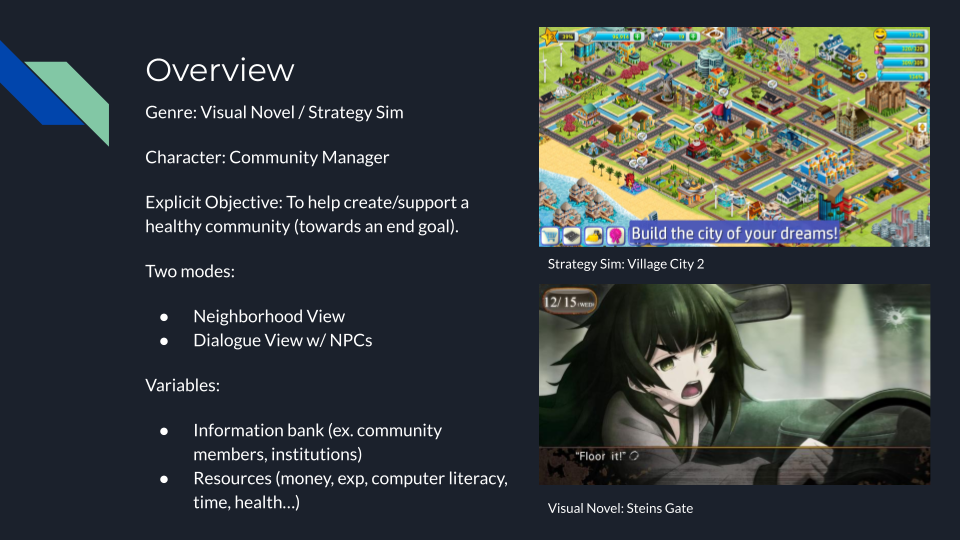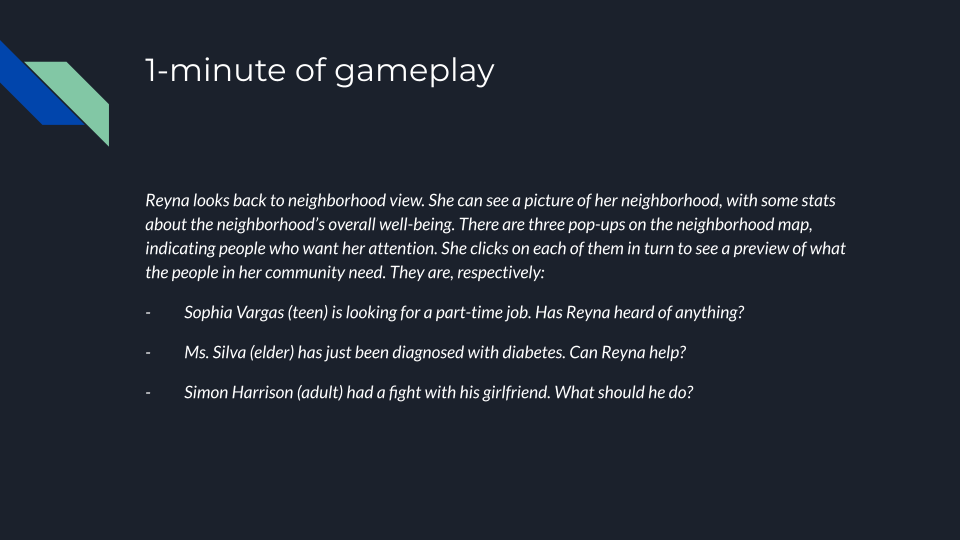OVERVIEW
Bloomwood Stories: Block Party is a singleplayer transformational self-efficacy visual novel game for PC, focused on increasing health literacy in marginalized communities.
ROLE: Lead Game Designer, Co-Producer
DURATION: 4 mo | Sept-Dec 2020
TOOLS: Figma
ADVISORS: Jessica Hammer, Geoff Kaufman
TEAM: Morgan C. Evans, Maya Greenholt, Adela Kapuścińska, Yang Lei, Junchao (David) Lin, Xuanyuan (Ember) Liu, Jaclyn Saik, Meo Zhang (8)
CLIENT: National Institutes of Health
IMPACT & OUTCOME
Awarded finalist in the 2021 James Paul Gee Learning Games Awards.
Published the paper “Designing a Self-Efficacy Game for Health Literacy in Marginalized Communities” to CHI Play 2020.

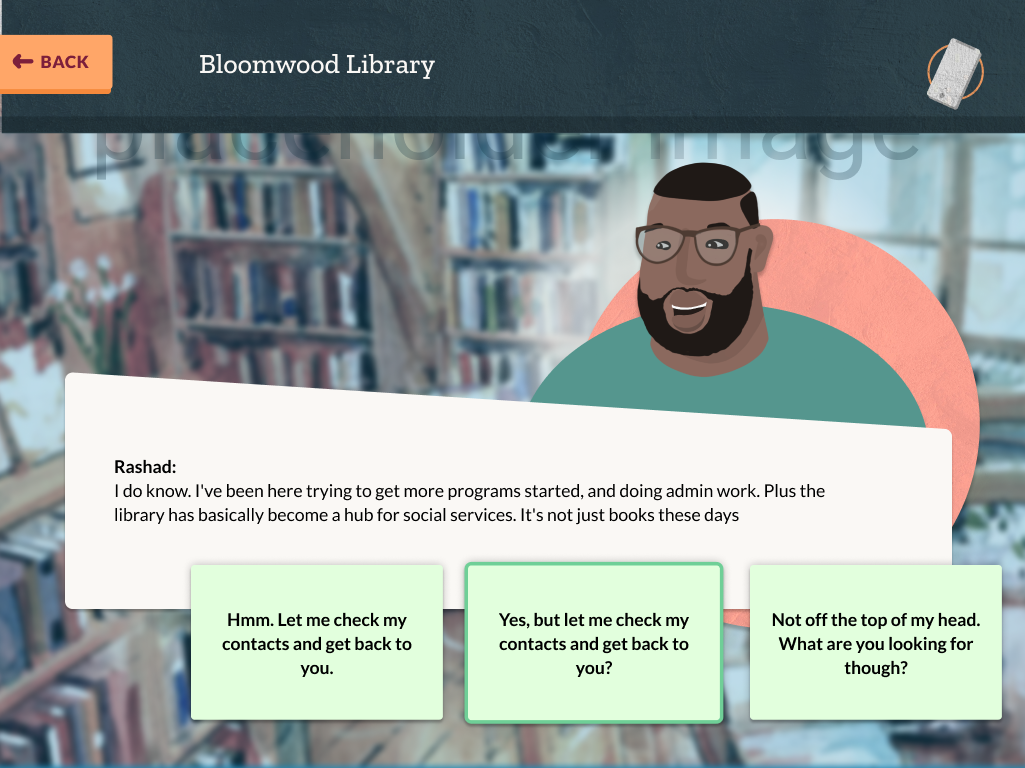
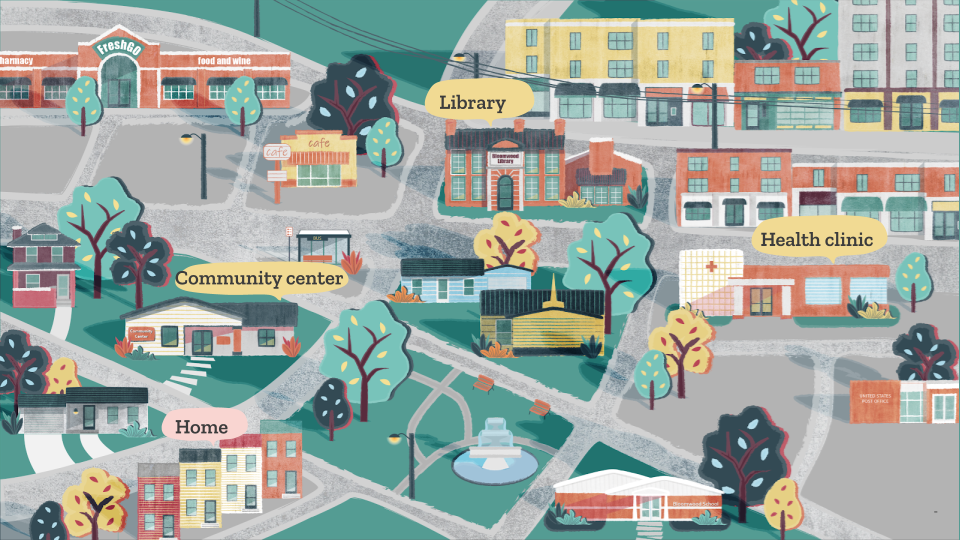
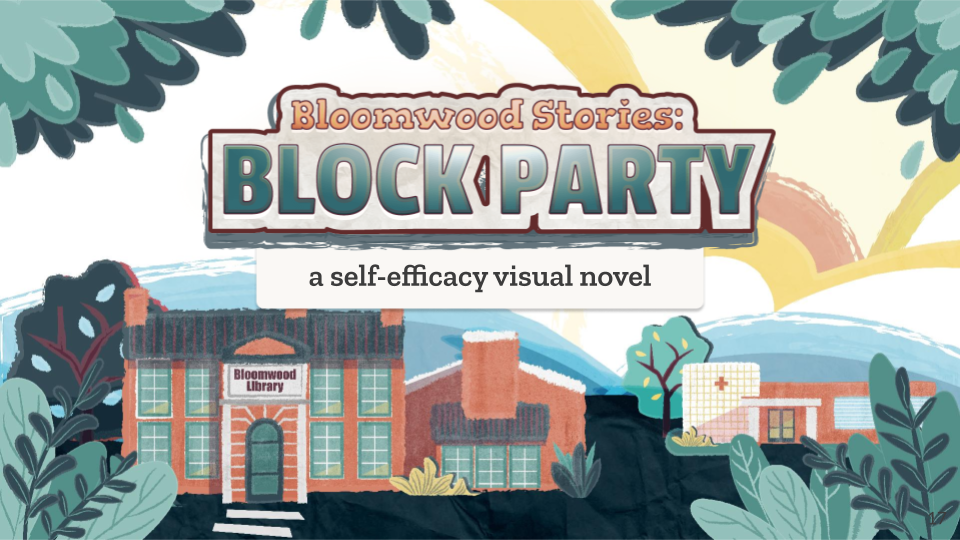
00 — CONTRIBUTIONS
As Lead Game Designer, I led game design, defined core mechanics based on foundational theory, mentored the design team, delivered design documentation and a pre-production package for hand-off to the next design lead and development team.
As Co-Producer, I kept the project on track. I supported the team in realizing our vision, communicating with experts, keeping our scope and training the next producer.
01 — THE CHALLENGE
Health inequity is a critical problem in the United States and one that primarily affects marginalized communities. Increasing health equity requires interventions to mitigate social, economic and environmental disadvantages experienced by these groups. One aspect that guides the current work involves creating interventions that increase both health literacy and health self-efficacy for recipients.
How might a game increase health literacy and self-efficacy among marginalized populations?
02 — THE SOLUTION
In Bloomwood Stories: Block Party, players take on the role of a community manager who works to better their community. By combining visual novel and strategy simulation mechanics, our game design addresses skill development through decision-making, mapping health information flow and giving recommendations to community members for best practices in context.
03 — BRAINSTORMING ON ALL FRONTS
To begin, we played and analyzed the internal board game provided to us by the client to understand stakeholder needs. To get our creative flowing and bond as a team - I had the team (1) come up with improvements to the board game, and; (2) create entirely new designs based on 1 of its original mechanics.
Next, the design team worked in parallel to research team to identify promising avenues for our design. One such brainstorming artifact was the Transformational Game Framework:
The design team went through 3 rounds of game idea generation, within the following constraints:
Types of users (single player, family-mediated player, library-facilitated play)
Artifacts involved (online portal/database, journal, power of family/community)
Self-efficacy concepts (skill development, guided practice, social support)
04 — DESIGN SYNTHESIS & CLUSTERING
I synthesized the 16 game sketches: identifying core gameplay concepts (ex. simulation or time travel), factors (ex. individual or interpersonal), self-efficacy paradigms (ex. guided practice or skill development), game character types (ex. multiple perspectives or non-expert character) and useful game references (ex. Elm City Stories or Quandary). Then, I brought out their strong and useful elements to cluster them into the most effective game design combinations.
For example, by designing the game’s main character (the community manager) as a non-expert in health literacy but a figure of authority motivated to increase their knowledge (to better support their community), we present players with a learning trajectory into mastery.
A summary of the 16 game design sketches’ strengths based on my work, as prepared by Maya Greenholt.
After forming 3 clusters, our design leadership held a gameplay workshop to generate more concepts and reach to our final pitch:
